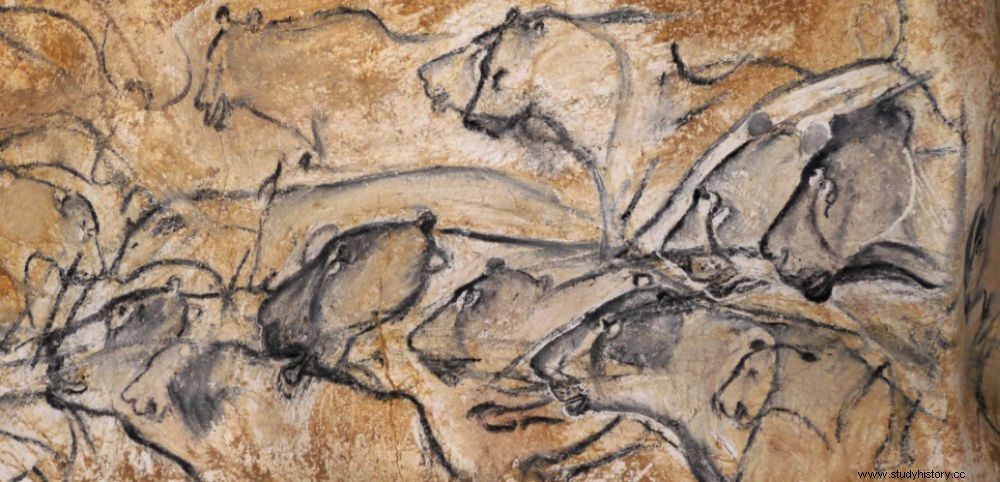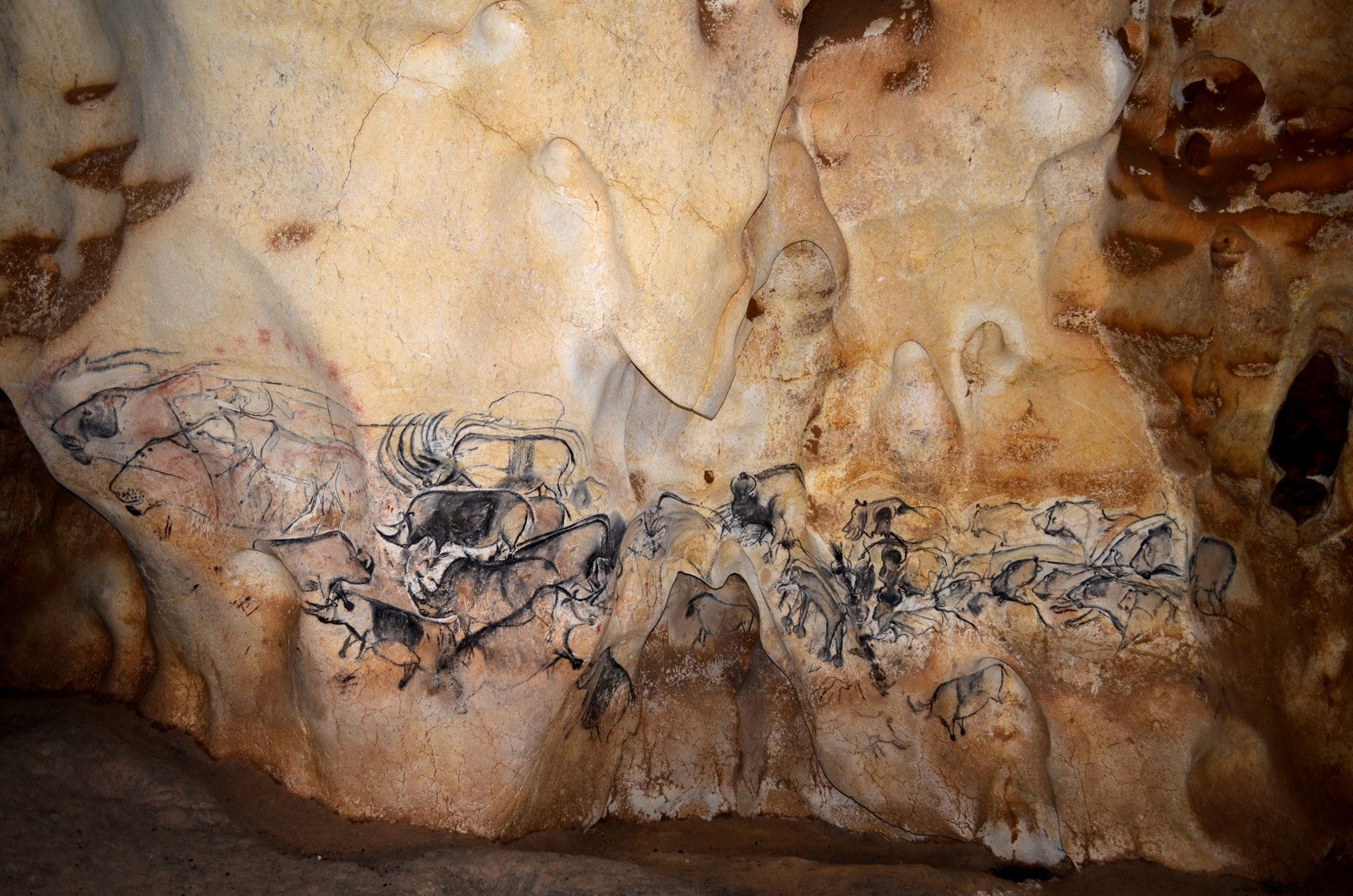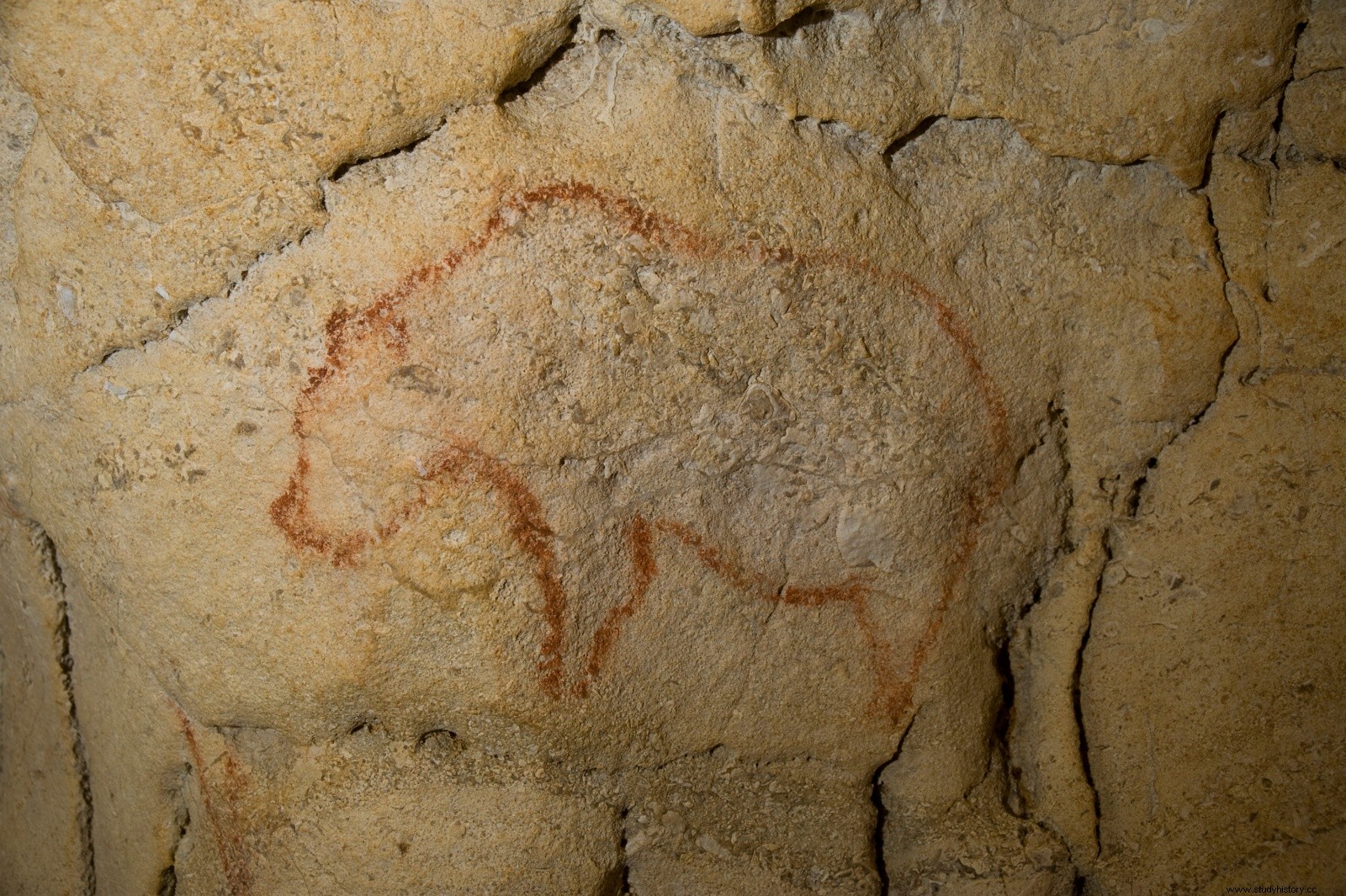 Panel of Lions, in the Chauvet-Pont d'Arc cave (Ardèche).
Panel of Lions, in the Chauvet-Pont d'Arc cave (Ardèche). STATISTICS. A world treasure of parietal art, the Chauvet-Pont d'Arc cave and its bewitching prehistoric paintings, continues to reveal its secrets. Researchers have in fact come, using a so-called "Bayesian" statistical approach, to propose a completely new scenario of occupation of the places both by animals, in particular the bear, 48,000 years ago and then by man here 37,000 years old. Discovered in Ardèche, in 1994, by three speleologists, the decorated cavity - of which it is now possible to admire a copy in the space of restitution of Razal, not far from the original -, indeed remains a subject of study because a certain number of points remained to be clarified with regard to this occupation. Inaccessible to the public for preservation reasons, the cave lions, horses or woolly rhinoceroses that adorn the walls of the cave, listed as a UNESCO World Heritage Site, continue to see specialists come to scrutinize this veritable cathedral of prehistory on a regular basis. .

Monumental panel of rhinos and lions. ©Ministry of Culture and Communication
In an article published in the Proceedings of the National Academy of Sciences (PNAS)**, the researchers used Bayesian statistics to "restore for the first time, in the same time scale, the history completeness of the cave both for the activity of men and animals ". This mathematical approach allowed them to combine in a single model all the data at their disposal, whether archaeological, paleontological or geomorphological. Pioneer of this approach, Anita Quiles, a young physicist attached to the archeometry center of the French Institute of Oriental Archeology in Cairo (IFAO), took over the 259 datings obtained until then from different analysis methods ( carbon14, uranium-thorium, etc ) to produce the most accurate timeline ever for understanding cave life. "True ages", also announced for the first time in calendar years, and no longer in "years before present or BP (Before Present ) as was done until then in archeology for so-called absolute dating.
These results provided a coherent scenario showing human frequentation of the cave during two distinct periods. "We can now say that a first human occupation took place from 37,000 to 33,500 years ago, and that a second took place from 31,000 to 28,000 years ago “Explained to Sciences et Avenir, Anita Quilés. Most of the works would have been made during the first human occupation. "All of these datings concern of course the realizations produced using charcoal because there is currently no technique to directly date the color pigments “, specifies the physicist.

In the Chauvet cave, the bears occupied the cave to winter.
In terms of animal occupation, these datings showed that the cave bears who frequented the cavity used it between 48,500 and 33,300 years ago. "We now have a model where the cavity is partially closed at 29,000 years, then completely closed at 23,000 and 21,000 years . Which means that everything that could have happened in the Chauvet-Pont d'Arc cave, including the creation of the parietal works, is older than these dates, knowing that no trace of human frequentation appears over 28,000 years ago. The paintings are related to human activity, so they predate this age,” clarified Anita Quiles. A decisive argument.
* After working on chronological modeling in Pharaonic Egypt, Anita Quiles began to apply Bayesian statistics to other archaeological fields. They are now widely used in archaeometry, and in particular for dating (To find out more, read in Sciences et Avenir "The dating of the past is making its digital revolution", article by Audrey Boelhy published in n°809, July 2014).
** “A high-precision chronological model for the decorated Upper Paleolithic cave of Chauvet-Pont d'Arc, Ardèche, France », in PNAS, 10.1073
